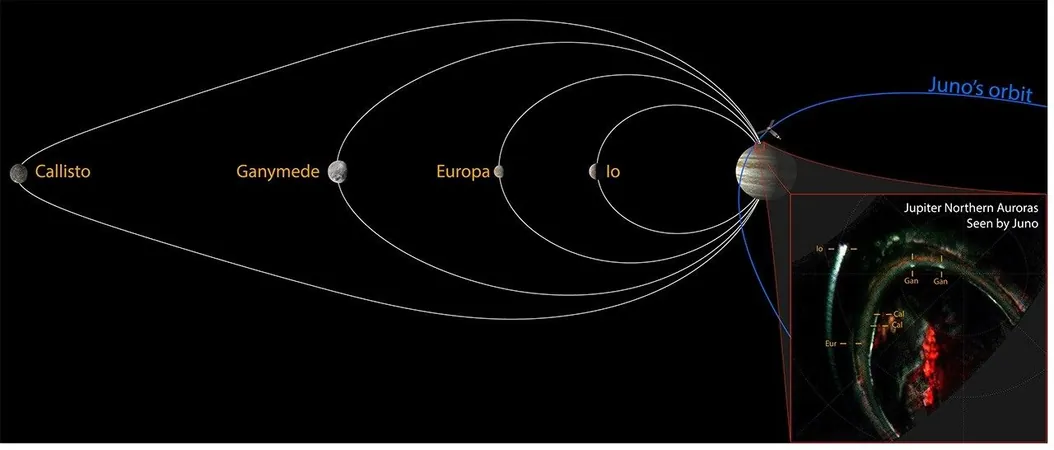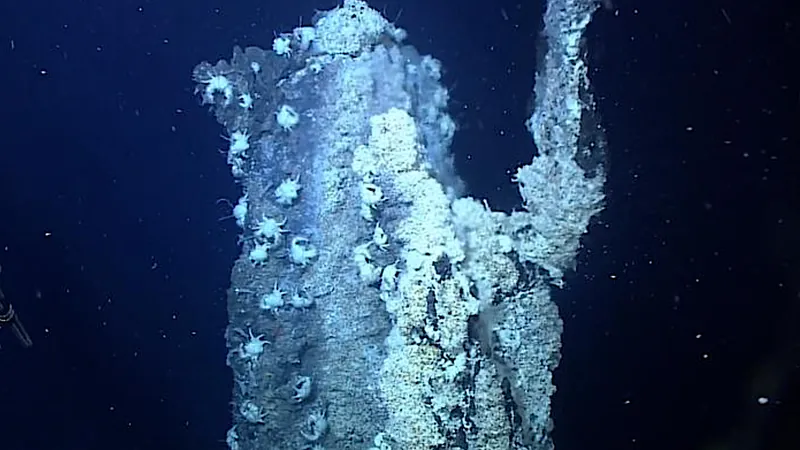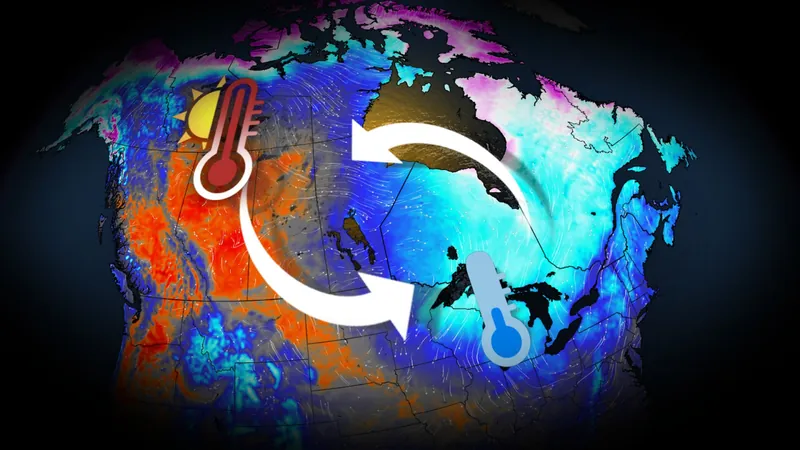
Juno Unveils Callisto's Elusive Auroral Signature: A Cosmic Revelation
2025-09-03
Author: Benjamin
Jupiter, the gas giant, is renowned for hosting the most dazzling auroras in our Solar System. These stunning light displays, visible near its poles, reveal the intricate dance between the planet and the solar wind, along with its majestic moons caught in Jupiter’s colossal magnetic grip.
Unlike Earth, where the Moon remains mute in the context of auroras, Jupiter’s largest moons—collectively known as the Galilean moons—generate their own unique auroral signatures. These phenomena, termed "satellite footprints," serve as fascinating indicators of how each moon interacts with the surrounding cosmic environment.
Before NASA's Juno mission took flight, three of these Galilean moons—Io, Europa, and Ganymede—were confirmed to produce distinct auroral signatures. However, Callisto, the most distant of the lot, eluded detection, shrouded in mystery despite numerous attempts with the Hubble Space Telescope. Its faint auroral signature often faded behind the brilliance of the main auroral oval, where Jupiter’s primary auroras display their splendor.
Since its arrival in 2016, Juno has provided unprecedented close-ups of these polar light shows. To capture Callisto's elusive footprint, Juno needed to align perfectly: the auroral oval had to shift, allowing for a clear view, and the spacecraft required the right trajectory to cross the magnetic field line linking Callisto and Jupiter.
In a stroke of cosmic luck, both conditions aligned during Juno's 22nd orbit around Jupiter in September 2019. This pivotal moment unveiled Callisto’s auroral footprint for the first time, while also giving scientists invaluable data on the associated particle populations, electromagnetic waves, and magnetic fields.
Jupiter’s magnetic field extends far beyond its major moons, shaping a vast magnetosphere that interacts dynamically with the solar wind streaming from the Sun. Just as solar storms can push Earth’s auroras southward, so too can they influence Jupiter's. During a significant solar event in September 2019, a high-density solar stream impacted Jupiter’s magnetosphere, digitally revealing the faint but distinct auroral signature tied to Callisto as the main auroral oval migrated toward the planet’s equator.
This groundbreaking discovery not only confirms that all four Galilean moons leave their celestial fingerprints on Jupiter’s atmosphere but also establishes that Callisto’s auroras are sustained similarly to those of its siblings, completing the stunning family portrait of Galilean moon auroral signatures.









 Brasil (PT)
Brasil (PT)
 Canada (EN)
Canada (EN)
 Chile (ES)
Chile (ES)
 Česko (CS)
Česko (CS)
 대한민국 (KO)
대한민국 (KO)
 España (ES)
España (ES)
 France (FR)
France (FR)
 Hong Kong (EN)
Hong Kong (EN)
 Italia (IT)
Italia (IT)
 日本 (JA)
日本 (JA)
 Magyarország (HU)
Magyarország (HU)
 Norge (NO)
Norge (NO)
 Polska (PL)
Polska (PL)
 Schweiz (DE)
Schweiz (DE)
 Singapore (EN)
Singapore (EN)
 Sverige (SV)
Sverige (SV)
 Suomi (FI)
Suomi (FI)
 Türkiye (TR)
Türkiye (TR)
 الإمارات العربية المتحدة (AR)
الإمارات العربية المتحدة (AR)